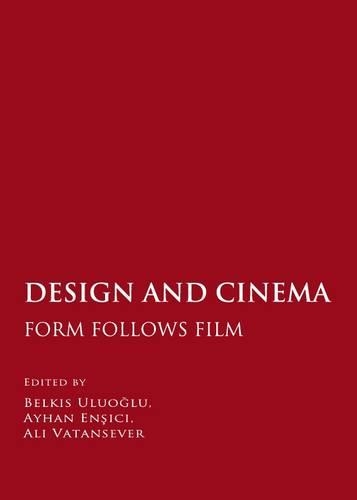
Design and Cinema: Form Follows Film
Series: English
Why has cinema become so closely acquainted with the design disciplines, and vice versa? What valuable or significant experience can come out from this brotherhood, both in terms of substantial and in terms of representative means? What seems to be more promising in terms of theory making both in design and in cinema is the substantial dimension of their relationship, since it points to an essenti
NaN
VOLUME
English
SF

Why has cinema become so closely acquainted with the design disciplines, and vice versa? What valuable or significant experience can come out from this brotherhood, both in terms of substantial and in terms of representative means? What seems to be more promising in terms of theory making both in design and in cinema is the substantial dimension of their relationship, since it points to an essential change in our conception of existence and space: The timelessness of optic space replaced by the time-bounded experientiality of haptic space. This also brings about different theoretical elements for analysis by leaving the subject and the object aside and looking into what their relations have produced, the outcome being patterns of experience which exist somewhere between the lived and the made, i.e. being abstract and concrete at the same time. And, finally, this is where cinema becomes a poetic medium and an important tool for representing the so-called patterns. Design and Cinema: Form Follows Film is interested in seeing those patterns in terms of formal categories, thought to be representation of certain experiences. The book is organized in two parts, Discourse on Form and Film and Works on Form and Film. The first part of the book - discourse - is intended to give a picture of current thought on the formal categories, introduced here as, existential, narrative, structural, constructive, temporal, digital, social, and fragmental. The second part of the book presents works, conducted either in the form of workshops or films, as expressive media of the formal categories discussed in the first part. The volume presents works of Juhani Pallasmaa, Gul Kale, Ayse N.Erek, Ayse E.C. Orlandi, Andong Lu, Francois Penz, Marshall Deutelbaum, Ferenc Bone, Dilek Altuntas, Halit Refig, Arthur Lizie, Tugyan A.Dural, Fatos Adiloglu, Seckin Kutucu, Lutz Robbers, Turker Armaner, Feride Cicekoglu, Alex McDowell, Gul K.Erk, Joaquim Moreno, Aydin H. Polatkan, Helmut Weihsmann, Ayse Senturer, Julie Talen, Olga Vasques-Ruano, Otto von Busch, Henric Benesch, Belkis Uluoglu and Isil B.Serim.About the Author: Belkis Uluoglu is an Associate Professor of Architecture at I.T.U., Istanbul. Her areas of interest are: Design theory, cognitive processes in design, design education, and architectural theory. She has published articles on epistemological and ontological basis of architecture and on design knowledge. She is presently conducting a research on Architectural Discourse in Turkey: a reading of architectural treatises of the Ottoman and early Republican period. Ayhan Ensici is a Ph.D. candidate in the Industrial Product Design program of I.T.U., Istanbul. His areas of interest are, design theory and methodology, design teams, product design in cinema, and visual presentation. He has produced product design works and published articles on the design process. He is the founder and editor of the web design publication Designophy. Ali Vatansever is an industrial product designer, continuing his MA degree in Film and Television at Istanbul Bilgi University and MFA degree in Film Production at Rochester Institute of Technology as a Fulbright fellow. He directed short films and documentaries which are widely shown in festivals. His articles about design and cinema are published in national magazines and online journals. He is presently working on a medium-length science fiction film. His areas of interest are design and cinema; aesthetics in film and photography.
Price Comparison [India]
In This Series
Bestseller Manga
Trending NEWS




















